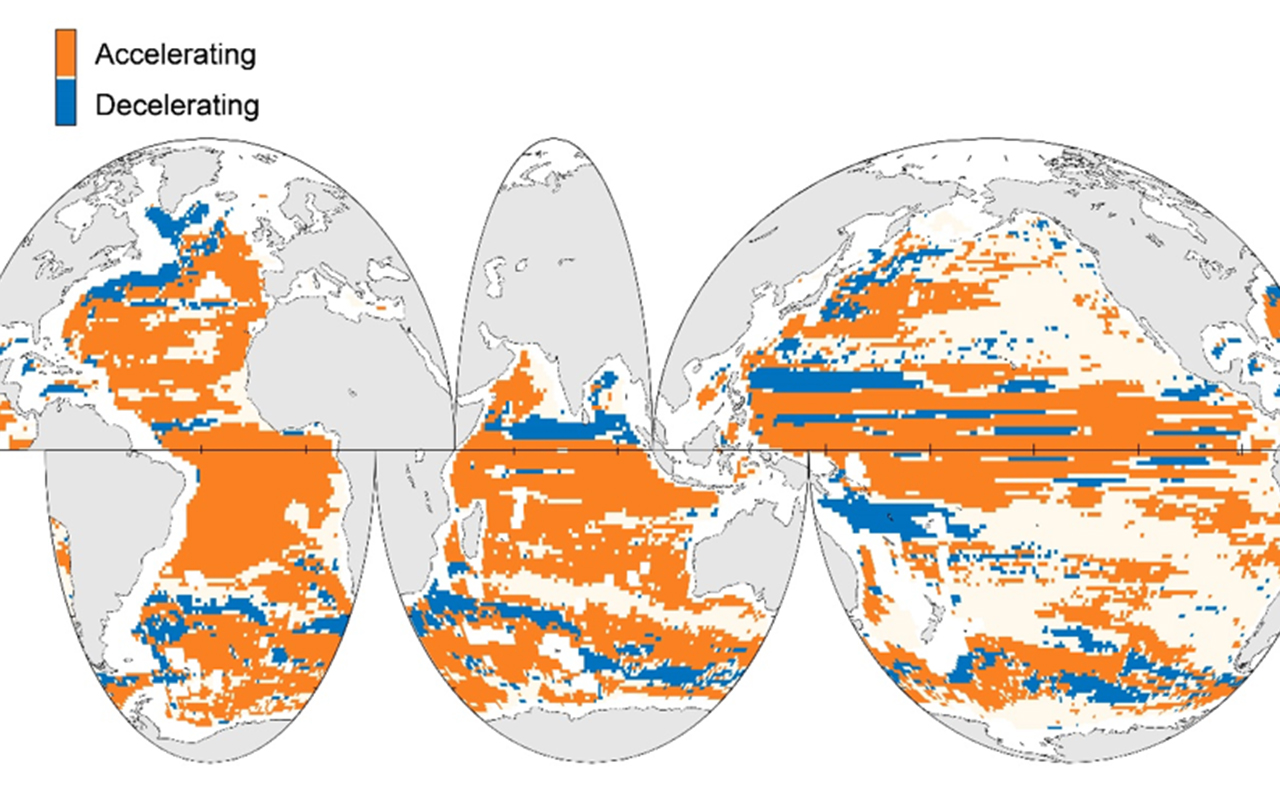
Study Shows Acceleration of Global Mean Ocean Circulation since 1990s
Influence of greenhouse gas emissions cited as contributing cause
Published Date
By:
- Robert Monroe
Share This:
Article Content
A study published today in the journal Science Advances, suggests global ocean circulation has accelerated during the past two decades. The research team found that oceanic kinetic energy shows a statistically significant increase since early 1990s, calculating a 36-percent acceleration of global mean ocean circulation.
The trend is particularly prominent in the global tropical oceans, reaching depths of thousands of meters. The deep-reaching acceleration of the ocean circulation is mainly induced by a planetary intensification of surface winds, authors said.
The study was led by Shijian Hu, who performed the work as a postdoctoral researcher in the laboratory of Janet Sprintall, an oceanographer at Scripps Institution of Oceanography at the University of California San Diego who is a co-author of the paper. Hu is now a scientist at the CAS Key Laboratory of Ocean Circulation and Waves, at the Institute of Oceanology (IOCAS) in Qingdao, China.
"The magnitude and extent of the acceleration in ocean currents we detected throughout the global ocean and to 2000-meter (6,560 foot) depth was quite surprising," said Sprintall. "While we expected some response to the increased winds over the past two decades, that the acceleration was above and beyond that was an unexpected response that is likely due to global climate change."
Large-scale ocean circulation is the main dynamic process that redistributes ocean water mass and heat and plays an important role in Earth's environment and climate system. It regulates land temperatures, most notably in regions such as western Europe where a flow of relatively warm water makes the climate of cities such as Madrid warmer than cities such as New York, despite being at the same latitude.
Because of internal dynamic processes and natural variability, ocean circulation in different regions has different responses to global climate warming. And there is still a lack of systematic and continuous direct observations of the earth's ocean circulation. Hence circulation trends have not been well-understood, study authors said.
A growing body of evidence suggests, though, that continuous greenhouse gas emissions due to human activities give rise to Earth's energy imbalance and continuous ocean warming. Thus, it is essential to know what large-scale ocean circulation is going to be under the background of global warming, said study co-authors.
An international team of scientists from IOCAS, Scripps, NOAA and the Commonwealth Scientific and Industrial Research Organization in Australia used ocean circulation and wind speed data from multiple sources, including observations from the global Argo network of robotic floats and numerical simulations, to investigate global mean ocean circulation and global mean sea surface wind speed. They concluded that the recent acceleration is far greater than what would be explained by natural variability. The rest is induced by the influence of continuous greenhouse gas emissions.
The intensified surface winds since the early 1990s, the authors said, spurs ocean circulation. The acceleration may lead to enhanced heat and water mass transport, so additional energy would be redistributed more evenly and the water cycle in the ocean may be intensified as well. Heat in upper ocean layers may be transferred into the deep ocean more efficiently due to the deep reach of this acceleration. Further research is needed to explore the implications of this study, the authors said.
- Adapted from IOCAS
Share This:
You May Also Like
Stay in the Know
Keep up with all the latest from UC San Diego. Subscribe to the newsletter today.



